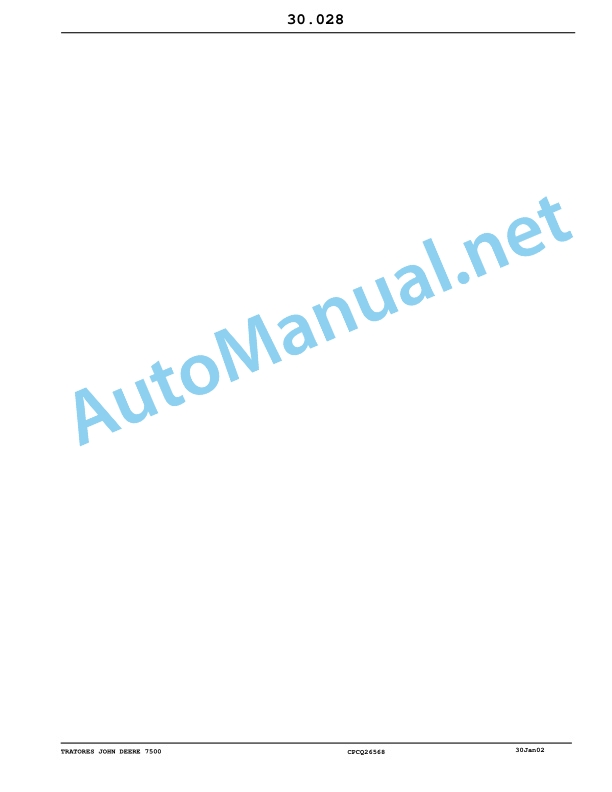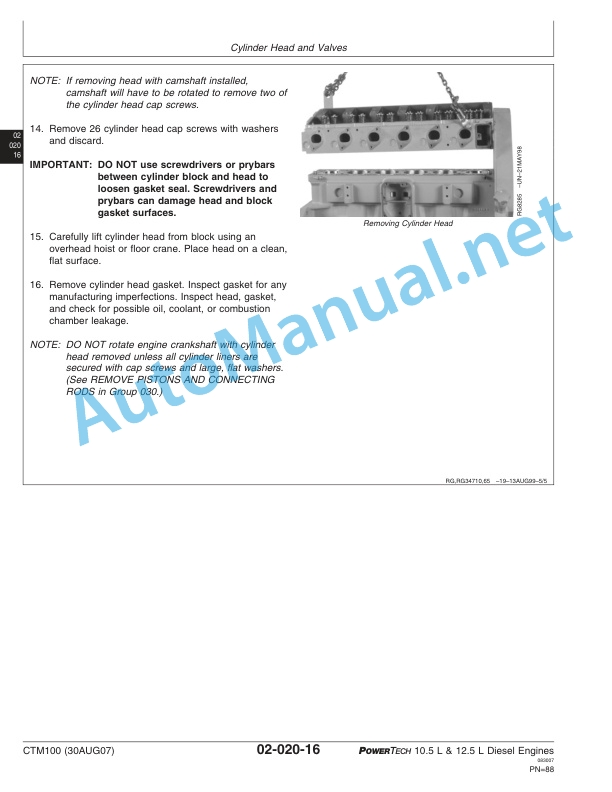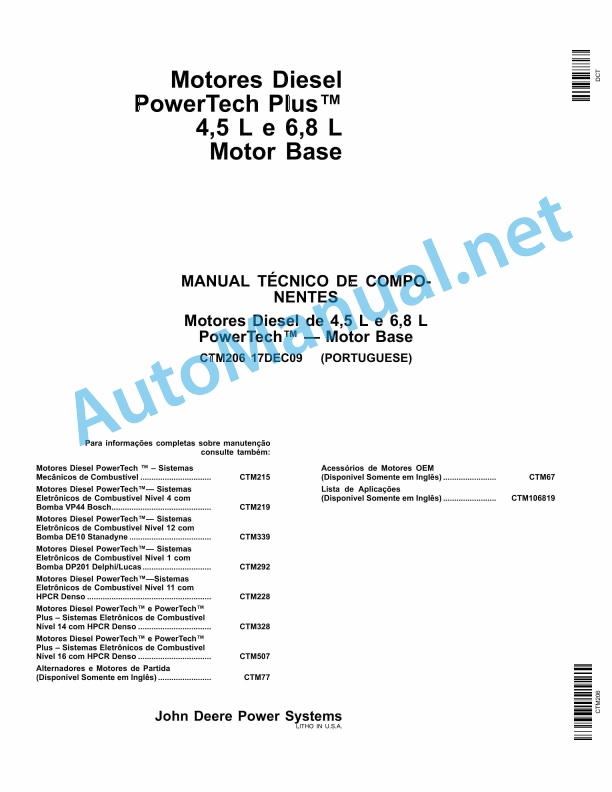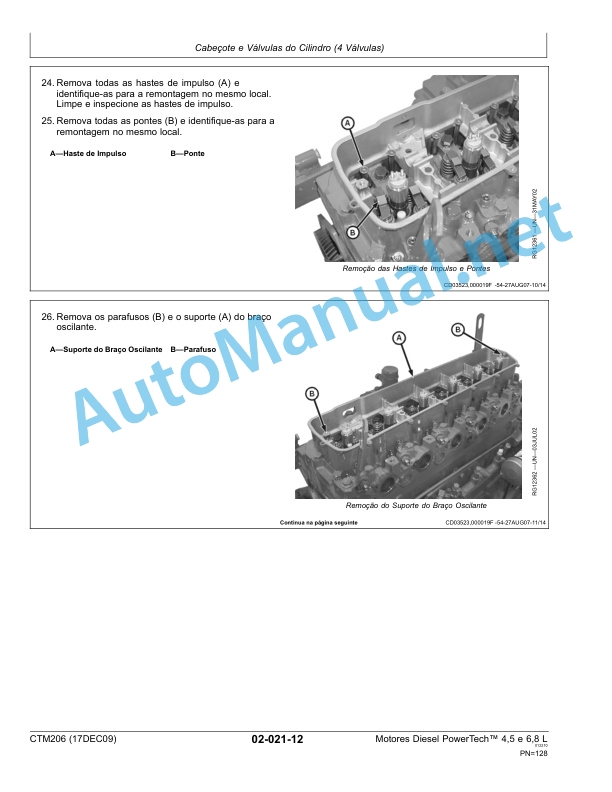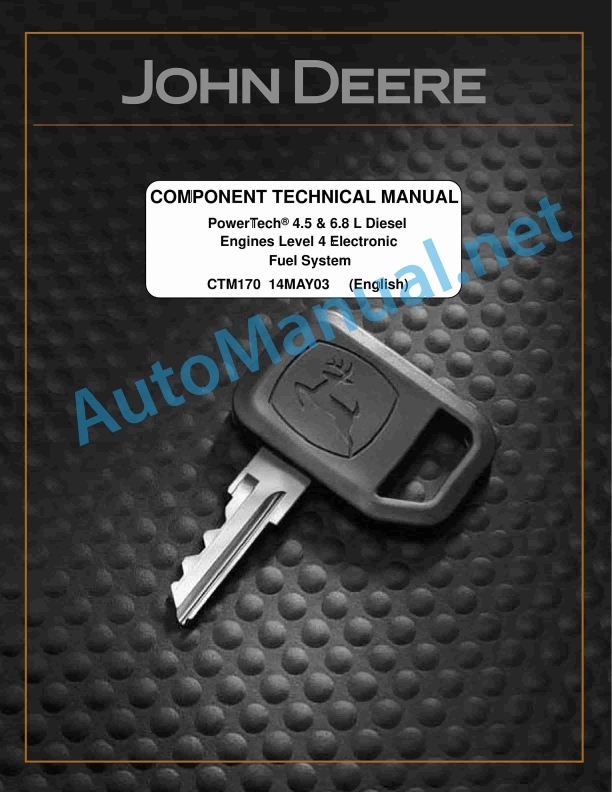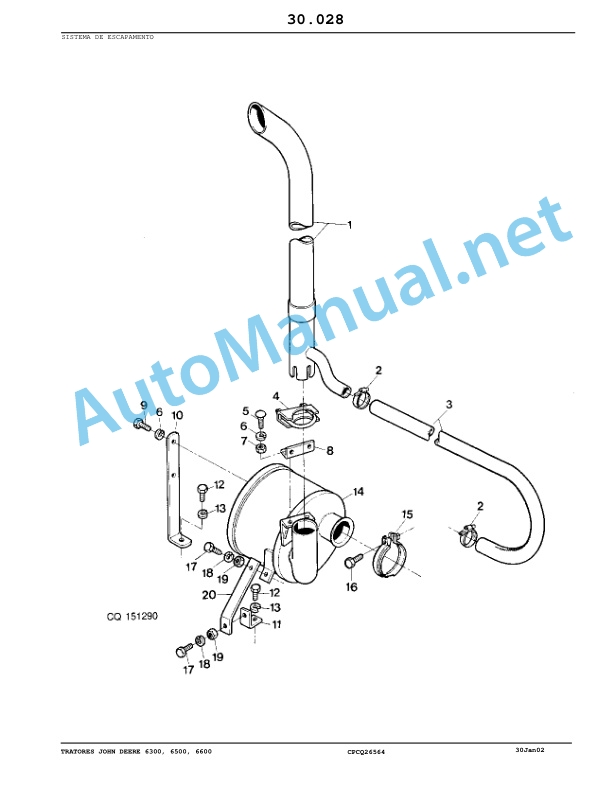Claas Scorpion 9040 (K05) Telehandlers Operator Manual ES
$50.00
- Model: Scorpion 9040 (K05) Telehandlers
- Type Of Manual: Operator Manual
- Language: ES
- Format: PDF(s)
- Size: 9.5 MB
File List:
00 0292 356 0.pdf
00 0295 123 1.pdf
00 0295 123 1.pdf:
General index
1. Introduction
1.1 Observations to the instruction manual
Abbreviations/symbols
1.2 Global view of the machine
1.3 Model name – commercial name
1.4 Synoptic description
Hydrostatic propulsion
Working hydraulics and steering on all 4 wheels
Refrigeration system
1.5 Areas of application
1.6 Use: implement
1.7 Provisions
Driving license
equipment
Machine inspections
Documents on board the machine
Machine warning signs
1.8 CE declaration of conformity model 404-03
1.9 Nameplates and equipment numbers
Serial number
Cabin number
Engine number
Hydraulic pump number
variable engine number
Variable engine number (quick change option)
N_x001E_ front and rear axle
1.10 Labels and symbols
Labels on the outside of the machine
Labels inside the machine
2 Safety instructions
2.1 Identification of warning and danger statements
2.2 Warranty
2.3 Appropriate use and exclusion of liability
2.4 General rules of conduct and safety instructions
Organizational measures
Selection and qualification of personnel, basic obligations
2.5 Safety instructions for operation
Normal functioning
Lifting tackle
Trailers and implements
Transport
2.6 Safety instructions for maintenance and care
Maintenance and conservation work on ROPS/FOPS structures (ROPS bar)
2.7 Information on special hazards
Electric power
Gas, dust, steam, smoke
Hydraulic system
Oils, greases, and other chemicals
3 Management
3.1 Control elements: overview
3.2 Cabin overview
3.3 Overview: instrument panel, multifunction lever, switch consoles
3.4 Description of witnesses and pilots
Witnesses and pilots – instrument panel
Witnesses and pilots – instrument panel
3.5 First start-up
Security instructions
Important information
Break-in time
Checklists
“Startup” checklist
“Operation” checklist
“Machine Stop” Checklist
3.6 Cabin
Open the door from outside and inside
Open/close the side window
Open the side window completely and lock it
Open/close the rear window
Emergency exit through the rear window
Interior lighting
3.7 Before starting the engine
Generalities
3.8 Start the engine
3.9 Overview of error code displays (103 kW diesel engine from serial number 404 03 0021)
Flashing code reading
Warning limit – coolant temperature
Warning limit – charge air temperature
Warning limit – engine oil pressure
Error code overview
3.10 Electronic immobilizer with key system (option)
Coding (“instructing”) new ignition keys
Activate (lock) the electronic immobilizer
Deactivate (unlock) the electronic immobilizer
Delete coded keys
Security features
3.11 Electronic immobilntry (o/modify your personal code
Activate the electronic immobilizer
Deactivate the electronic immobilizer
Putting the electronic immobilizer out of service
Putting the electronic immobilizer back into service
Disconnect the power supply to the electronic immobilizer
Electronic immobilizer maintenance
3.12 Oil and fuel preheater (option)
Oil preheating (option)
Fuel preheating (option)
3.13 Starting the engine with jumper cables (external battery)
Security instructions
If the power supply vehicle and the telescopic handler have contact –
Procedure
3.14 Before starting the journey
Special instructions for driving on public roads
3.15 Lock the control lever (joystick) and the 3rd control circuit (implements)
3.16 Steering column height and tilt adjustment
3.17 Steering control
Steering requires more effort! Take this circumstance into account especially when towing the machine!
3.18 Synchronized wheel position
3.19 Height adjustment of the joystick support
3.20 Accelerator
3.21 Manual throttle (option)
3.22 Brake/Inching pedal
Slow progress
3.23 Parking brake
3.24 Moving forward with the telehandler
Starting on a hill
Changing direction of travel (forward/reverse)
Driving speed selection 0 – 20 km/h
Driving speed selection 0 – 30/40 km/h (option)
Inching device (option)
3.25 Electric mirror adjustment (option)
3.26 Load stabilizer (option)
General indication
Connect/disconnect the charge stabilizer
3.27 Backup warning (option)
3.28 Differential lock
Connect the differential lock
Disconnect the differential lock
3.29 Synchronize address
3.30 Change of address mode
Switch to front axle steering
Switch to 4-wheel steering
Switch to diagonal direction (dog step option)
Switch to diagonal direction at high speed –
3.31 Stop/park the machine
3.32 Lighting
Lighthouse
working headlight
3.33 Signaling system
Flashing
Emergency flashers
Rotating warning light (option)
3.34 Cabin heating and ventilation
3.35 Air conditioning system (option)
3.36 Windshield washer/rear window washer system
Windshield washer/rear window washer system reservoir
3.37 Seat
Seat adjustment
Weight adjustment
Height adjustment (air suspension seat, option)
Backrest adjustment
Longitudinal adjustment
3.38 Seat belt (lap belt)
After an accident the belt material has been stretched and becomes useless. In the event of an accident, the seat belt
Fasten the seat belt:
Release the seat belt
Lengthen/shorten the hip belt:
3.39 Hood
3.40 Fire extinguisher (option)
3.41 Main battery switch (option)
3.42 Reversible fan (option)
3.43 Towing and transporting the machine
Preparatory work for towing
Tow the machine
After towing
3.44 Loading and transporting the telescopic handler
General safety instructions
Machine loading
Tie down the machine
3.45 Load the machine with a crane
Security instructions
Crane loading
3.46 Telescopic equipment control: overview
Joystick control for lift, tilt and push cylinders
Command of the 3rd command circuit
3.47 Telescopic equipment control
General safety instructions
Overload warning
Overload warning indicator
Operation control of the overload warning
Deactivate/activate the overload warning interlock function (option)
Raise/extract telescopic equipment
Enter/lower the telescopic equipment
Lower the emergency telescopic equipment in case of diesel engine failure
Mounting an implement on the hydraulic quick hitch
Retrofit: implements on the mechanical quick hitch (option)
3.48 “Break valve” safety device
3.49 Assembling/disassembling the pallet fork
Driving on public roads with the pallet fork
3.50 Adjusting the fork arms
3.51 Working with the pallet fork
General safety instructions
Spec safety instructions
ief instructions on using the fork arms
Load diagram for pallet forks (EN 1459/1998)
The maximum load depends on the equipment of the telescopic handler!
Bring the machine closer to the material
Pick up material
Pick up material and deposit it in an elevated position
– with the telescopic equipment extended and in an elevated position,
– with the fork mount straight and tilted too far back,
– in conditions of strong wind and poor visibility –
Unloaded transport position
3.52 Working with the standard bucket
General indications
Payload for buckets
Practical instructions for excavation
Bucket tipping position
Bucket transport position
Transport tour with full bucket
Loose material loading
Load material that is difficult to penetrate
Pulling/digging in soft soil
Pulling/digging in hard ground
Vehicle loading
Machine release
3.53 Working with a crane arm (option)
Crane arm work –
3.54 Mechanical closure of rear axle oscillation
3.55 Hydraulic rear axle oscillation lock (option)
3.56 Level regulator on the front axle (option)
3.57 Control of the 3rd control circuit in continuous operation (option)
3.58 Control: 3rd control circuit as additional front control circuit (option)
3.59 Front/rear additional control circuit control (option)
3.60 Tilting trailer control (option)
3.61 Connection of electrical implements (option)
3.62 Autohitch trailer coupling control (option)
3.63 Trailer coupling control (option)
If the locking bolt is not inserted correctly into the hole below the hitch mouth –
3.64 Compressed air brake system (option)
General safety instructions
Coupling and uncoupling the compressed air hoses (dual circuit brake system)
Disengage:
Compressed air pressure gauge
If the air pressure drops below 5 bar while driving
3.65 Connecting the hydraulic trailer brake (option)
3.66 Mounting implements from other manufacturers on the quick hitch (option)
Example: Test plan for implements from other manufacturers
4 Malfunctions
4.1 Engine faults
4.2 Malfunctions in the air conditioning system (option)
5 Maintenance
5.1 Introduction
5.2 Safety shoring of telescopic equipment
5.3 Fuel system
Specific safety instructions
Service stations
Diesel specification
Check/replace fuel prefilter (water separator)
Replace the fuel filter
Bleed the fuel system
5.4 Engine lubrication system
Check oil level
Add engine oil
Replace the engine oil every 500 h/s (service hours)
Replace the engine oil filter cartridge every 500 h/s (service hours)
5.5 Engine and hydraulic cooling system
Specific safety instructions
Check the level and quality of the coolant
Add coolant
Bleed/replace coolant
Clean the radiator fins
Clean the radiator with the reversible fan (option)
5.6 Air filter
Control of dirt in the air filter
Replace the air filter cartridge at 500 h/s (service hours)
5.7 V-belts
Belt retensioning
5.8 Hydraulic system
Specific safety instructions
Checking hydraulic oil and return filter
Check the hydraulic oil level every day
Add hydraulic oil
Important indications for the use of biodegradable oil
5.9 Check the hydraulic pressure lines
Specific safety instructions
5.10 Greasing work
General safety instructions
Grease the swing bearings of the front and rear axles
Grease the planetary bearing
Synopsis of grease points on telescopic equipment
Grease the telescopic equipment
Check and adjust sliding plates
5.11 Grease with the central lubrication system (option)
General Functional Description
Adjust greasing and pause times
Fill the central lubrication system
5.12 Brake system maintenance
Specific safety instructions
Check/add brake fluid
5.13 Maintenance of the compressed air brake system (option)
Check the tank and compressed air lines
Check fixation and drive of the compressor
5.14 Tires
Check the tires every day
Change wheels
5.15 Heating with fresh air
Clean/replace fine dust filter or activated carbon filter (option)
Clean/replace recirculated air filter
5.16 Air conditioning system maintenance (option)
General safety instructions
Welding work in the closed system –
Functional and visual control every day
5.17 Maintenance of electrical equipment
Specific safety instructions
Periodic maintenance and conservation work
Electrical cables, light bulbs and fuses
Three-phase current alternator
Adjust the headlights of the machine
Check/replace battery
Battery acid is very corrosive!
Therefore, when recharging the battery and/or carrying out work near it:
In case of acid splashes:
5.18 Trailer coupling maintenance
Trailer coupling (option)
5.19 General conservation work
Specific safety instructions
If washing solutions are used
If compressed air is used
If using a high pressure cleaner or steam jet:
If volatile and easily flammable corrosion protection sprays and products are used
Cleaning the interior of the cabin
Seat belt cleaning
Cleaning the exterior of the complete machine
Clean: engine and engine compartment
Threaded joints
Pivot points and hinges
5.20 Maintenance and care work “Aggressive media” (option)
Factory applied corrosion protection
Components provided with anti-corrosion protection
Measures to take to ensure long-lasting anti-corrosion protection
Application of the anticorrosive layer
Treatment of rusty surfaces
5.21 Maintenance and conservation of implements
5.22 Maintenance program (overview)
5.23 Fuels and lubricants
5.24 Maintenance sticker
Explanation of the symbols on the maintenance sticker
maintenance sticker
6 Technical data
6.1 Synopsis of models and commercial names
6.3 Deutz engine t BF4M 2012/BF4M 2012C
6.4 Deutz engine type: TCD 2012 L04 2V
6.5 Oil/water radiator fan
6.6 Propulsion
variable pump
variable motor
6.7 Axes
front axle
Rear axle
6.8 Service brake and parking brake
6.9 Address
6.10 Working hydraulics
Hydraulic pump
Protection of hydraulic cylinders
Speed: lift, tilt and push cylinder
Hydraulic pre-control
Additional control circuit (option)
6.11 Electrical system
Fuse overview
electrical groups
Main fuse box with relays (75, 88, 90, 100 kW diesel engines)
Main fuse box with relays (103 kW diesel engine)
Synopsis of the relays
6.12 Tires for model 404-03
6.13 Weights
6.14 Towed load/drawbar load: trailer couplings (option)
6.15 Noise measurement
6.16 Vibrations
6.17 Coolant mixing table
6.18 Tightening torques
General tightening torques
Special tightening torques
6.19 Model 404-03 payloads
Rigid front axle without rear axle oscillation closure
Rigid front axle with mechanical or hydraulic closure of the rear axle oscillation
Front axle with level regulator, without rear axle oscillation lock
Front axle with level regulator and hydraulic closure of the rear axle oscillation
6.20 Dimensions with spoon
6.21 Dimensions with pallet fork
John Deere Parts Catalog PDF
John Deere Tractors 7500 Parts Catalog CPCQ26568 30 Jan 02 Portuguese
John Deere Repair Technical Manual PDF
John Deere Repair Technical Manual PDF
John Deere 16, 18, 20 and 24HP Onan Engines Component Technical Manual CTM2 (19APR90)
John Deere Repair Technical Manual PDF
John Deere Repair Technical Manual PDF
John Deere Repair Technical Manual PDF
John Deere Repair Technical Manual PDF
John Deere Parts Catalog PDF
John Deere Tractors 6300, 6500, and 6600 Parts Catalog CQ26564 (29SET05) Portuguese
John Deere Repair Technical Manual PDF
John Deere DF Series 150 and 250 Transmissions (ANALOG) Component Technical Manual CTM147 05JUN98
John Deere Repair Technical Manual PDF
John Deere 18-Speed PST Repair Manual Component Technical Manual CTM168 10DEC07





